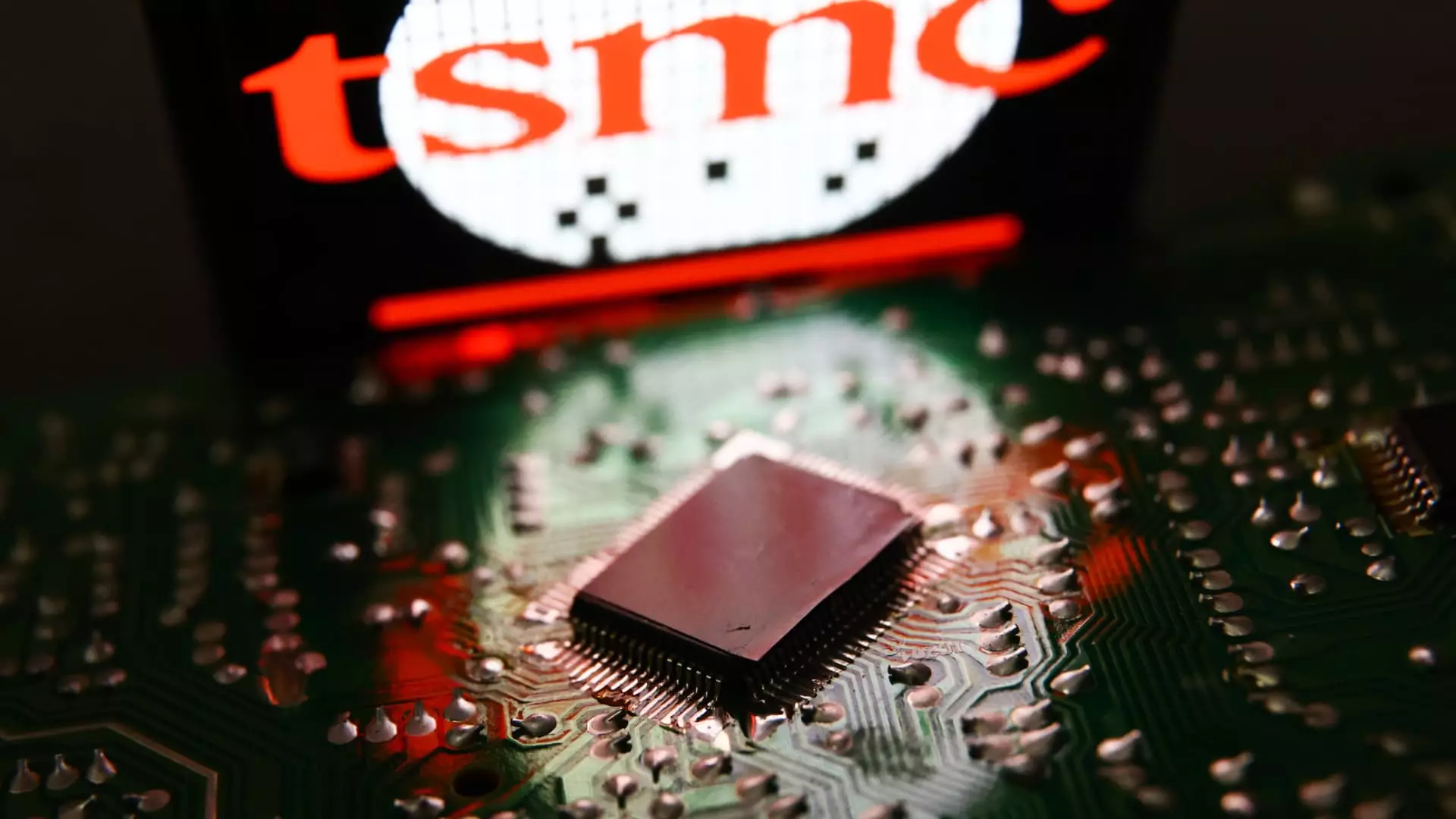The recent pronouncement by the U.S. government ordering Taiwan Semiconductor Manufacturing Co. (TSMC) to halt shipments of advanced chips to Chinese customers marks a significant escalation in the ongoing technological and geopolitical rivalry between the United States and China. As artificial intelligence (AI) becomes an increasingly critical component in global technological leadership, the implications of such export restrictions resonate beyond immediate business impacts and delve into the broader spectrum of international relations, economic strategy, and technological innovation.
The nature of the restrictions is particularly telling; they specifically target chips of 7 nanometers or more advanced designs, which are essential for powering AI accelerators and graphics processing units (GPUs) used widely in tech applications. This embargo comes in the wake of TSMC’s revelation of its chip being discovered in a Huawei AI processor—a finding made public by the tech research firm Tech Insights. This incident has acted as a catalyst for renewed scrutiny over supply chains and adherence to export control regulations, especially considering that Huawei is already on the U.S. government’s restricted trade list, which complicates any business dealings with the company.
These restrictions suggest a zero-tolerance stance by the U.S. government, showcasing its willingness to implement robust measures to hamper any advancements in AI capabilities by Chinese firms. The complexities of the situation underscore concerns not just of compliance, but of competitive advantage in a rapidly evolving tech landscape.
The order reflects a broader pattern seen in U.S. policies, where semiconductor trade is increasingly viewed through a national security lens rather than solely an economic one. The context of growing tensions between the U.S. and China reinforces the urgency for policymakers to act decisively in protecting domestic technological supremacy. The suspension of chip shipments by TSMC—an industry leader—could potentially impact various sectors that rely on these advanced technologies, leading to unforeseen complications in global supply chains.
Furthermore, the mechanism by which the U.S. government is imposing these controls—the use of “is informed” letters—indicates a shift towards more agile regulatory approaches that sidestep lengthy legislative processes. This highlights the pressing need to adapt policies in response to rapidly evolving technological dynamics and competition from global entities, particularly China.
The ramifications of TSMC’s suspension of shipments extend beyond immediate corporate impacts, prompting a reevaluation of China’s position in the global semiconductor ecosystem. The action against TSMC reinforces perceptions of a bifurcated technology landscape, where companies are increasingly required to choose sides in a geopolitical conflict that is intensifying. The decision will affect many companies relying on TSMC for semiconductor supply, potentially leading to a ripple effect that can disrupt innovation and market stability.
Moreover, the intensifying regulations call attention to the inadequacy of existing compliance measures. The U.S. government’s need for tighter controls on semiconductor exports to China aligns with bipartisan acknowledgment that previous efforts have been insufficient. This recognition may incite further legislative action aimed at reinforcing national security while balancing the need for continued technological advancement.
As the Biden administration moves towards more stringent controls—including a new list of Chinese companies marked for trade restrictions—companies in the semiconductor sector must adapt to an unstable regulatory environment. It is essential for executives and policymakers alike to engage in proactive dialogue to navigate this changing landscape intelligently. The ability to innovate in AI while adhering to complex export regulations will define the next phase of competition between the United States and China.
The semiconductor industry, a cornerstone of modern technology, finds itself at a crossroads. Responsibility lies within both governments and corporations to reconcile the need for innovation with the challenges posed by national security considerations. Moving forward, it will be pivotal for stakeholders to remain vigilant and adaptable in responding to these unprecedented restrictions while fostering an environment conducive to continued growth and cooperation where possible.
The recent export control measure against TSMC reflects broader geopolitical tensions and the U.S. commitment to preserving its technological edge. The serious implications for global supply chains, international relations, and the semiconductor industry necessitate a comprehensive understanding of the factors at play, putting this issue at the forefront of modern economic and strategic discourse. The future landscape will depend on how industries and governments respond to these ongoing challenges and the strategic decisions they make in the pursuit of technological and economic advancement.

